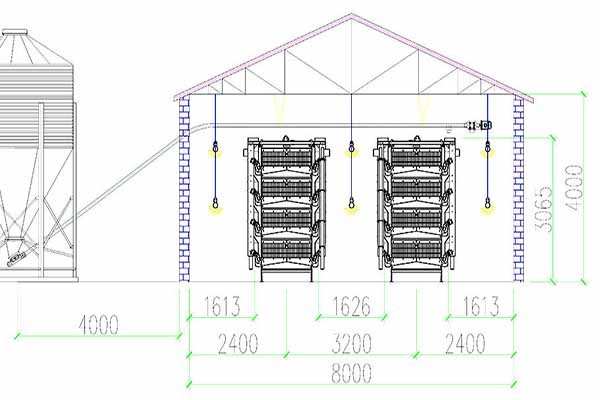Designing a Chicken Cage System for 25,000 Birds in Zambia
Understanding the Scale and Requirements
In Zambia, the poultry industry is thriving, and with the increasing demand for chicken meat, setting up a large-scale poultry farm is a lucrative venture. One such venture requires a chicken cage system that can accommodate up to 25,000 birds. This article delves into the key aspects to consider when designing a chicken cage system for such a large scale operation.
Key Components of a Large-Scale Chicken Cage System
– Capacity Calculation: The total number of birds that can be housed is determined by the dimensions of each cage and the space required for each bird. Generally, a standard cage size for chickens is 0.6 to 0.8 square meters per bird.
– Cage Design: The design should allow for easy access for feeding, cleaning, and monitoring. The materials used should be durable and resistant to corrosion, with a minimum gauge of 16-gauge steel.
– Ventilation: Proper ventilation is crucial to maintain the health of the birds. A ventilation rate of 0.5 to 1 cubic meters per bird per minute is recommended.
– Manure Management: A system for collecting and removing manure is essential to prevent disease and maintain cage cleanliness. Solid manure collection systems can be integrated into the cage design.
– Water and Feed Systems: Each cage should have easy access to fresh water and feed. A continuous feed system can reduce feed waste and improve efficiency.
Case Study: A 25,000 Bird Chicken Cage System in Zambia
Consider a 25,000 bird chicken farm in Zambia. Here’s how the system could be structured:
– Total Space Required: Assuming 0.7 square meters per bird, the total space required for the cages would be approximately 17,500 square meters (190,000 square feet).
– Number of Cages: If using 2-meter deep cages, you would need around 11,714 cages to accommodate 25,000 birds.
– Ventilation and Cooling: A ventilation system should be designed to cover the entire area, with fans and louvers to ensure adequate airflow and cooling.
Investment and Maintenance Costs
– Initial Investment: The cost of the chicken cage system will vary based on material quality and local pricing. On average, it could range from $2,500 to $3,500 per cage.
– Maintenance: Regular maintenance includes cleaning, repairs, and replacement of worn-out parts. A skilled maintenance team can help ensure the system runs smoothly.
Benefits of a Large-Scale Chicken Cage System
– Increased Productivity: With the right design, large-scale chicken cage systems can significantly increase productivity, leading to higher yields.
– Cost Efficiency: Automation and efficient space utilization can reduce costs per bird.
Conclusion
Setting up a chicken cage system for 25,000 birds in Zambia is a significant investment. However, with proper planning and design, it can be a highly profitable venture. For more detailed information and a free design proposal, please leave your query below. We at LIVI Mechanical offer comprehensive solutions tailored to your needs.

